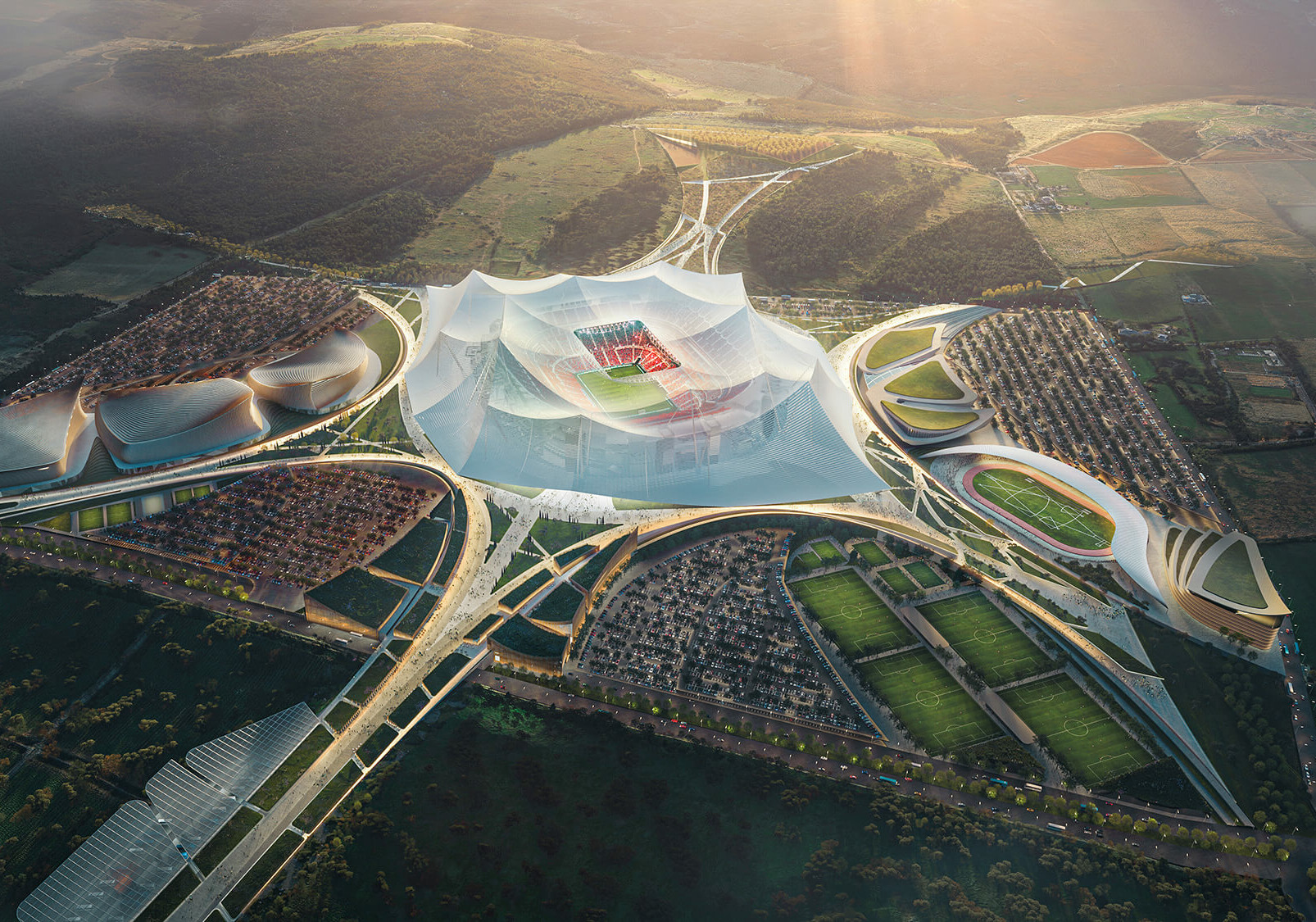The world’s largest soccer stadium is actually in North Korea, at least for now. Rungrado May Day Stadium in Pyongyang has been the largest football pitch since it was completed in 1989—it has 114,000 seats. (Other estimates say it has 150,000 seats.) Soon, a new stadium in Benslimane, Morocco, will eke out the DPRK’s gargantuan venue.
Benslimane is located about 40 miles outside of Casablanca. Grand Stade Hassan II De Casablanca is being designed by Populous and Oualalou + Choi, a French office. With seats for 115,000 spectators it will take the crown as the largest soccer stadium in the world. It’s named after King Hassan II, who governed Morocco between 1961 to 1999, a period otherwise known as the Years of Lead.
King Mohammed VI, who succeeded King Hassan II in 1999, is driving the new stadium’s construction effort. When complete two of Morocco’s professional soccer teams will play in the arena. It will also be one of six arenas that hosts games during the 2030 FIFA World Cup, which Morocco is slated to unilaterally host with Spain and Portugal. Auxiliary locations for the 2030 World Cup will be in Argentina, Paraguay, and Uruguay.
A Moroccan Moussem
The design takes inspiration from Moroccan moussem, large meetings or gatherings and in traditional Berber culture refers to a festival event where a variety of activities are hosted.
From afar, the stadium will stand out thanks to its draped roof structure made of a unique aluminum lattice, recalling Frei Otto’s Olympic Stadium in Munich, supported by a large bowl.
Underneath the bowl will be a ring of 32 stairways that create monumental gateways replete with lush gardens on raised platforms about 90 feet above grade. Basketball courts, gathering areas, and additional soccer fields will be located around the 250-acre site.

“The Grand Stade Hassan II will provide extraordinary spaces that create exceptional experiences for every fan and every visitor,” said François Clément, a senior principal at Populous. “It is a cornerstone of King Mohammed VI’s vision to develop Morocco’s football infrastructure that will elevate Morocco to the highest global platform of sporting infrastructure development.”

New renderings of the stadium show the undulating, tented white roof made of aluminum. The illustrations depict the stadium in a rural, grassy landscape with long, almost circuitous paved paths leading up to to the venue,
The design draws inspiration from the traditional social gathering of Morocco known as a with the stadium structure set under a grand tented roof that emerges as a dramatic intervention in the forested landscape. Staircases wrap the exterior of the stadium taking speactors up to higher seating sections, while also affording a unique perspective on the architecture and its relationship with the landscape.

Labor Legislation
Public financing was secured for the project in October 2023, and groundwork is already underway at the site in Benslimane. Amnesty International, a human rights group, and Sports Rights Alliance have raised concerns about the 2030 World Cup, and what it could mean for laborers in Morocco, Portugal, and Spain. The issue of human rights and labor came up at the 2022 FIFA World Cup held in Qatar.
“Significant construction will be required in Morocco, including on a new 115,000 capacity stadium, but planned legislation to strengthen health and safety in the workplace has yet to be passed, and forced evictions are a concern,” Amnesty International noted in a report last June.
“In the three proposed host nations,” Amnesty International continued, “migrant workers are at risk of exploitation and other harms, including trafficking. Injuries in the workplace in Spain and Portugal are higher than the EU average. Migrant workers were abused and suffered wage theft enlarging FC Barcelona’s Camp Nou stadium in 2023.”
Construction on Grand Stade Hassan II De Casablanca is slated for completion in 2028.

